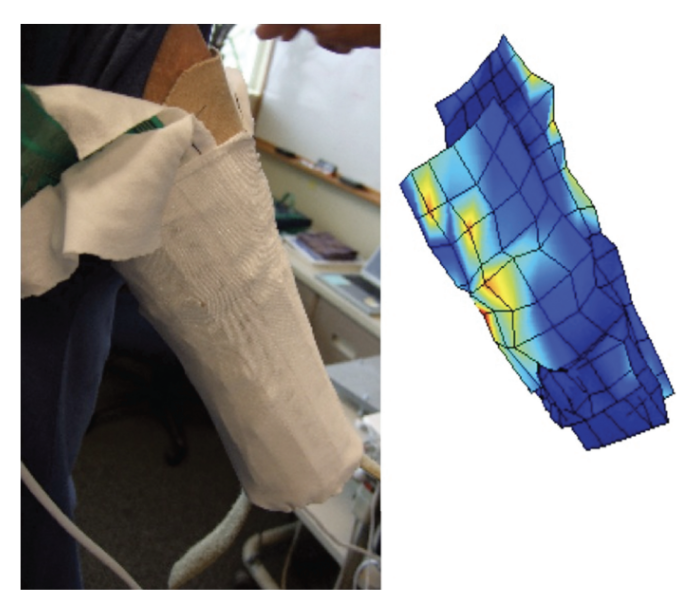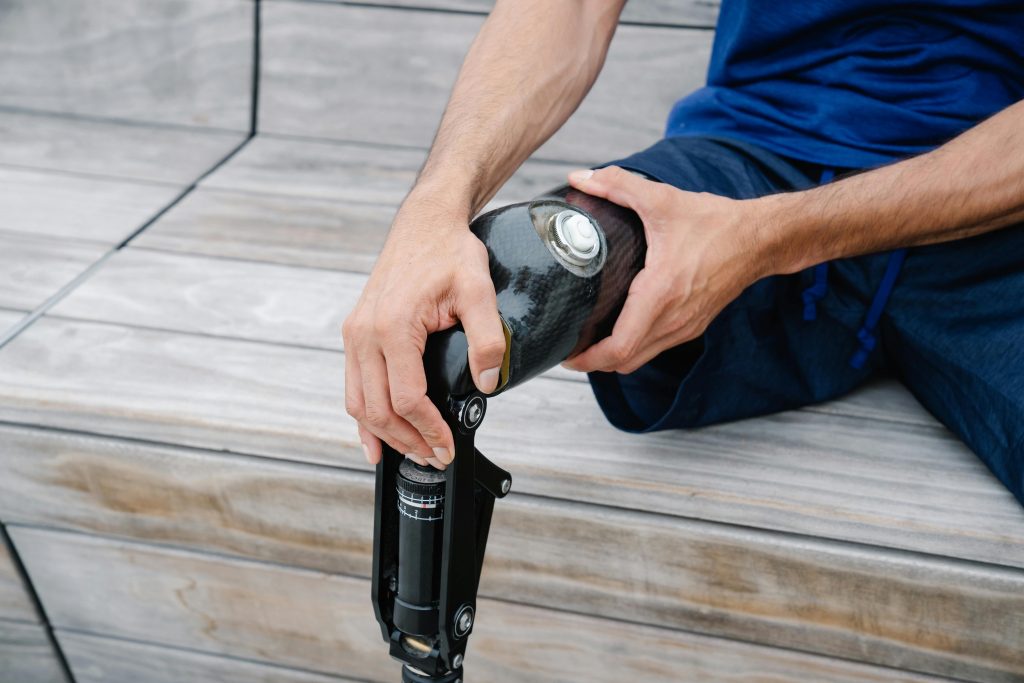How do pressure profiles and shear stresses in prosthetic sockets affect prosthesis user comfort? For prosthesis users, comfort is essential for mobility, quality of life, and long-term health. The fit and alignment of a prosthesis are highly individualized and crucial for instilling confidence in daily activities. However, current prosthesis fittings are largely subjective, depending on the prosthetist’s experience and user feedback. This qualitative method often overlooks the critical factor of pressure distribution within the socket, which can significantly impact pain levels and ease of movement.
Read more: Balancing the Load: Understanding Pressure Distribution in Prosthetic SocketsThe socket of a prosthesis is custom-molded to fit an individual’s residual limb, or the portion of a limb that remains after amputation. A liner is commonly used to help protect the skin and assist with the redistribution of loads throughout the residual limb. The liner is significant in providing a more even pressure distribution within the socket. Achieving a relatively even pressure distribution is crucial to avoid sharp pressure points within the socket. Proper prosthetic fit is a delicate balance between ensuring comfort by minimizing sharp pressure points and maintaining stability across various activities like walking, running, or navigating stairs.

To experimentally analyze the pressure profile of the residual limb, a study placed pressure sensors on the lateral (side), anterior (front), and posterior (back) surfaces of the residual limb. With these sensors, investigators were able to generate a 3D plot resembling the shape of the residual limb with peaks and color gradients to differentiate pressure magnitudes. Employing this quantitative method would enable prosthetists to visually identify pressure points during specific movements, rather than relying solely on user feedback.
A study found that pressure distribution within the prosthetic socket depends on several factors including gait pattern, residual limb shape and stiffness, and joint angles.
The gait cycle is the repetitive motion of walking, consisting of two phases: stance, when the foot is in contact with the ground, and swing, when the foot is off the ground. It is the rhythmic motion you undergo during walking without even thinking about it! Investigators found that the highest stresses due to forces within the socket are experienced during stance phase. Stress is a measure of the force applied to an object per unit area. Experimental data reports peak normal stress magnitudes of 205 kPa within prosthetic sockets during the stance phase of walking, meaning the pressure on skin and tissue can be quite high. For context, typical blood pressure is around 16–18 kPa—a fraction of the pressure exerted within the socket—highlighting the substantial impact 205 kPa can have on comfort. Along with pressure distribution, balancing shear (sliding) and normal (pressing) stresses is crucial for a comfortable socket fit. However, these forces are not evenly spread out, as each person’s residual limb has a unique shape and stiffness. Understanding where these forces act helps prosthetists design better-fitting, more comfortable sockets, highlighting the importance of developing precise methods to measure force location and magnitude.
Prosthetic socket fit is also critical during the swing phase of the gait cycle. Negative or suction pressure is necessary within the shell of the socket to keep the prosthesis secure. This suction pressure is achieved when there is a space between the residual limb and the socket at the bottom. This cavity creates a near-vacuum seal that secures the prosthesis to the residual limb, though its effectiveness varies by individual and differs each time they don their prosthesis.

Research into quantitative methods for analyzing pressure distribution in prosthetic sockets seeks to balance user comfort—by avoiding pressure points on the residual limb—with the support needed to secure the prosthesis and instill user confidence.
Featured image from MART PRODUCTION on Pexels
